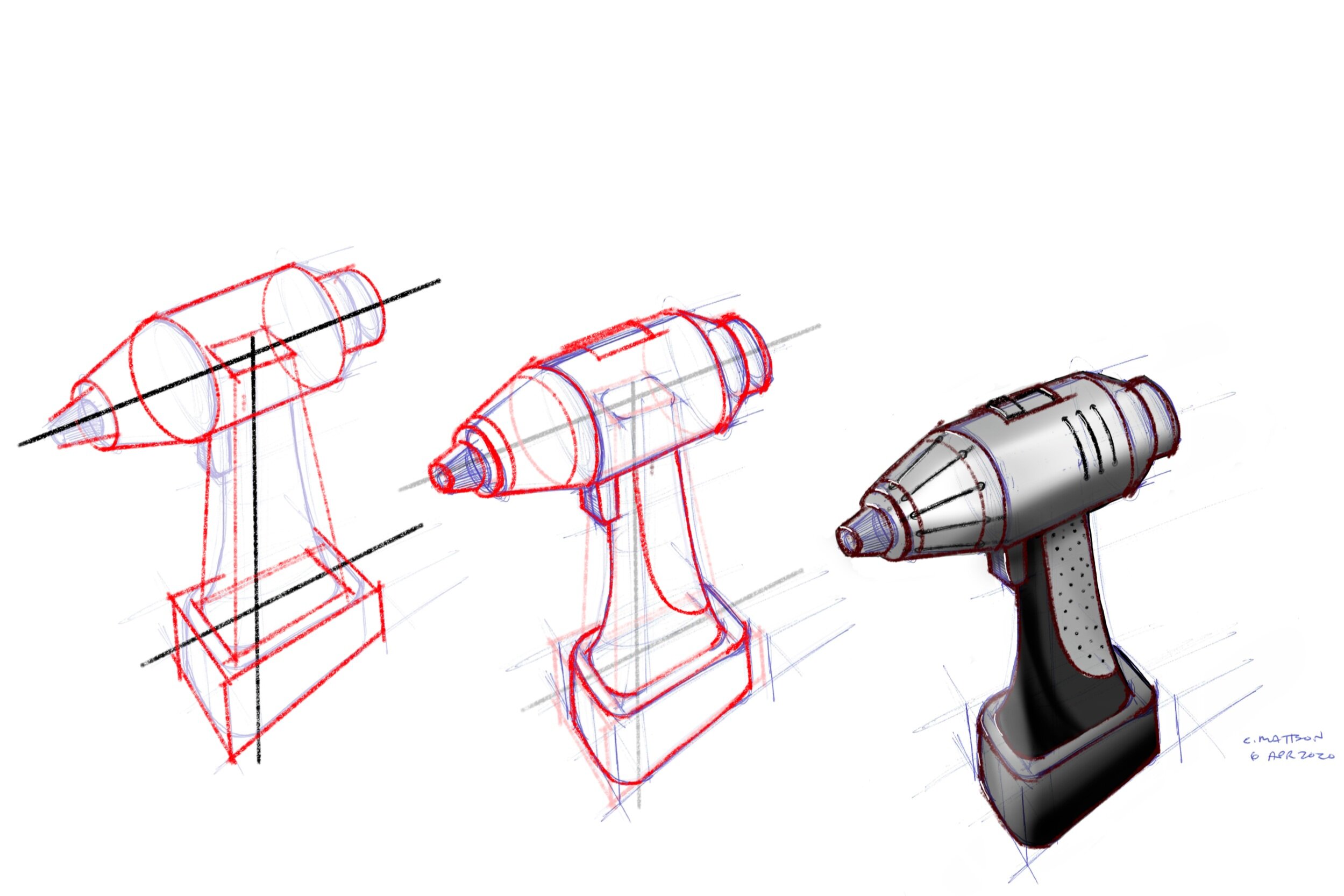Your primary job is to perform good design work, but a close second is to make it easy for other people to understand the work you’ve done. Neither of these is trivial, and neither should be underestimated.
Learn to Sketch: Part 3
As engineers we often need to conceptualize (and sketch) specific geometry such as specific wing shapes, specific gear trains, or a new component that needs to fit in a specific spot on an existing device. In this article, I’ll share a few insights and exercises designed to help you produce sketches of specific geometry, including cross-section sketches, and exploded-view sketches.
Design for the Ordinary
Designing for the ordinary might sound boring but it may be just as important as designing for the extraordinary.
The Library of Babel: From Gibberish to Defined Design
There are an infinite number of possible designs. How can designers choose the right combination of materials, geometries, and processes to achieve the best outcome?
Variety from Vermont and the Valley of Weird
Wildly different ideas, like those coming from Vermont (in the form of Senator Sanders), can be beneficial in designing anything from policies to products even if none of those ideas are ever implemented.
Book Review of "Product Development - Principles and Tools for Creating Desirable and Transferable Designs"
The recently published book “Product Development: Principles and Tools for Creating Desirable and Transferable Designs” is a unique addition to design resources available to students and engineering professionals interested in evolving their design ideas from the early stages of opportunity development all the way through to production.
Learn to Sketch: Part 2
Three new sketching exercises, plus a three-step sketching approach and mathematical rules that when followed produce realistic sketches.
Engineering Laughs
Take a break from all the bad news (and jokes today) and read…. more jokes! Happy April Fools Day!
Global Engineering Engagement During CoVid-19
The entire world is fighting the same problem. You are needed! And so am I. Don’t let your self-perceived lack of expertise, TV, video games, or whatever else keep us from the global engagement the world needs right now.
An Optimistic Perspective on the COVID-19 Pandemic
Can anything good come from the COVID-19 pandemic? This is one optimistic perspective about the potential benefits of COVID-19 (at least eventually) when all of this is over.
Learn to Sketch: Part 1
Learn the basics of product sketching. Even with 10 minutes a day, you will be surprised by the progress you can make. Try it out with part 1 of this learn to sketch series.
Plus ça Change, Plus C'est la Même Chose
In 1848, Jean-Baptiste Alphonse Karr penned the phrase, "plus ça change, plus c'est la même chose" or "the more things change, the more they stay the same". One hundred and seventy-two years later, one could argue that "the more products change, the more the designs stay the same." See how the products of the future are influenced by the designs of the past.
The Human Element of Technical Projects
It was my design versus Eric’s. I was confident though; the engineering analysis favored my design. Plus and I was the project lead, and the choice was mine. What could go wrong?
The Second Face of Innovation: The Experimenter
The second face of innovation as described by Tom Kelley is the Experimenter. It is no surprise that individuals identifying themselves as an Experimenter, will employ testing and prototyping more than any other of the ten faces of innovation. All of us have moments when we act as an Experimenter but some of us might be perennial Experimenters.
A Design Lesson from the Mars Rover Competition
Generating creative solutions to a problem is great—but only if you’re solving the right problems.
Healthy Attitudes for International Travelers
Traveling internationally soon, or hope to again sometime in the future? This article provides four principles to help hone your mind-set and turn your international travels into more meaningful experiences for you and those around you.
From Mundane to Master: Finding That Design Feeling
Most of us who want to become designers at some point pursue a major that we feel will get us to our objective. We say to ourselves “Self, I will attend school and become a great designer.” So, you begin an undergraduate program and start looking for the secret sauce…
Designing Experiments Near Absolute Zero
Although not everyone designs experiments near absolute zero, performing them can teach us there is no substitute for testing your design in the intended environment.
Lessons from Leap Year
Don’t miss the “once in four years” opportunity to reflect on some design lessons from Leap Year.
Taking Your 3D Prints to the Next Layer
Break free of your default settings to beat the blob with this 3D Printing walkthrough.



















